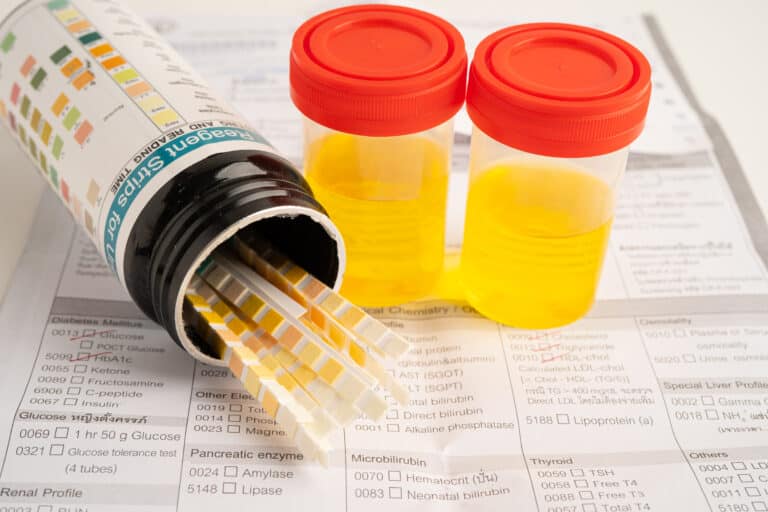There’s nothing inherently wrong with alcohol itself, particularly when it’s consumed in moderation.
There’s no shortage of problems that excessive drinking can cause. The major challenge is that assessing what constitutes excessive drinking is sometimes difficult. It’s especially hard after we’ve been consuming alcohol – because it inhibits our decision-making ability, our judgment can become clouded.
Let’s take a closer look at what excessive drinking of this depressant means, how it can hurt you, and try to answer the question, “How many drinks is too many?” The answer to that question may not be as simple as one thinks.
How do you define “a drink?”
Alcohol use is woven into the fabric of many people’s everyday lives. It accompanies celebrations, meals, and pretty much any kind of event you can think of. But before understanding how much is too much, let’s define what constitutes one “drink.”
According to the CDC, here are the criteria:
- A 12 oz. beer with 5% alcohol
- An 8 oz. malt liquor with 7% alcohol
- A 5 oz. glass of wine with 12% alcohol
- 1.5 oz of liquor or distilled spirits such as rum, vodka, or whiskey with 40% alcohol content (80-proof)
Those are general standards. It can be hard to adhere to them, depending on how we consume our alcohol. For example, a friend at a party pouring a drink or a bartender at a crowded nightclub may include even more alcohol content in a given drink.
What is the definition of excessive alcohol use?
The CDC identifies four categories of “excessive alcohol use,” including:
- Binge drinking
- Underage drinking
- Pregnant drinking
- Heavy drinking
Underage drinking is any time a person under 21 consumes alcohol. Pregnant drinking is self-explanatory; it’s any use of alcohol by a pregnant woman. Because of the risk of birth defects, no amount of alcohol consumption by a pregnant woman can be considered safe.
Heavy drinking is essentially binge drinking over a longer timeline. For men, 15 drinks or more in a given week represents heavy drinking (the total is eight drinks for women).
Binge drinking might be the biggest culprit, however. That is the consumption of five drinks or more on one occasion for men (or four drinks or more for women). One occasion is defined as a time frame of two or three hours. Binge drinking is popular with many college students and adults who might frequent bars or other establishments where alcohol is readily available.
Over 90% of excessive drinkers binge drink. In the United States alone, 38 million people reportedly binge drink. They do so an estimated four times a month.
One of the main challenges with this epidemic? Most people who engage in binge drinking (an activity that is dangerous to our physical and mental health) are NOT alcoholics or dependent on alcohol.
The dangers of excessive drinking
The CDC estimates the economic costs of excessive drinking at a whopping $249 billion while causing an estimated 88,000 deaths annually.
It can also lead to DUIs, car accidents, or other violent incidents. Alcohol use is often tied to incidents of domestic violence, and the presence of alcohol often fuels fights.
Alcohol abuse can lead to a lack of inhibitions. This may lead an inebriated person to do or say things they wouldn’t normally think of doing or saying. This can have a devastating effect on your relationships. It can lead to poor decision-making and extremely negative consequences – some that you may not be able to reverse.
Excessive drinking can also lead to what the CDC terms “risky sexual behavior.” This can include unprotected sex with multiple partners. This often leads to unintended pregnancies, and in cases where alcohol is abused, miscarriages and stillbirths.
Finally, excessive drinking over a long period of time can contribute significantly to numerous chronic conditions. Heart disease, high blood pressure, cancer, and numerous other conditions can either be caused in part or exacerbated by long-term alcohol abuse.
What affects how we process alcohol?
No two people will process alcohol the same way. Below are just a few factors that can impact how it affects you (according to the Cleveland Clinic):
How old you are
Age may have an impact on tolerance for alcohol. The older we get, the tougher it is for our bodies to process alcohol.
Your gender
Men possess more of an enzyme known as alcohol dehydrogenase. This metabolizes alcohol. Because of this, they have a higher tolerance than women.
Your size
The smaller you are, the more impact alcohol will have on your body.
Your family history
Do you have a family history of alcohol abuse or addiction? In that case, you’re more likely to have an alcohol problem as well.
Your health history
Having some comorbidities makes it more likely you have issues with alcohol.
Those are some of the more important factors, but there are others as well. For example, if you drink on a full stomach, it will take your body to feel the effects of the drinks. You’re more likely to get inebriated faster on an empty stomach.
How many drinks is too many?
The bottom line is that no one should regularly binge drink to avoid the negative health impacts of alcohol abuse. The CDC recommends that women have no more than one drink daily, while men have no more than two.
Done responsibly and in moderation, alcohol can be a part of your life. But if excessive drinking or binge drinking is a part of your routine, you may want to reassess your relationship with drinking. If you’re binge drinking regularly or surpassing the recommended daily limit, you’ll want to cut back for the benefit of your own health.
Worried about your alcohol use? We’re not here to judge – we’re here to help. For more on how we can help, contact us today.






